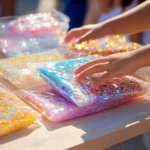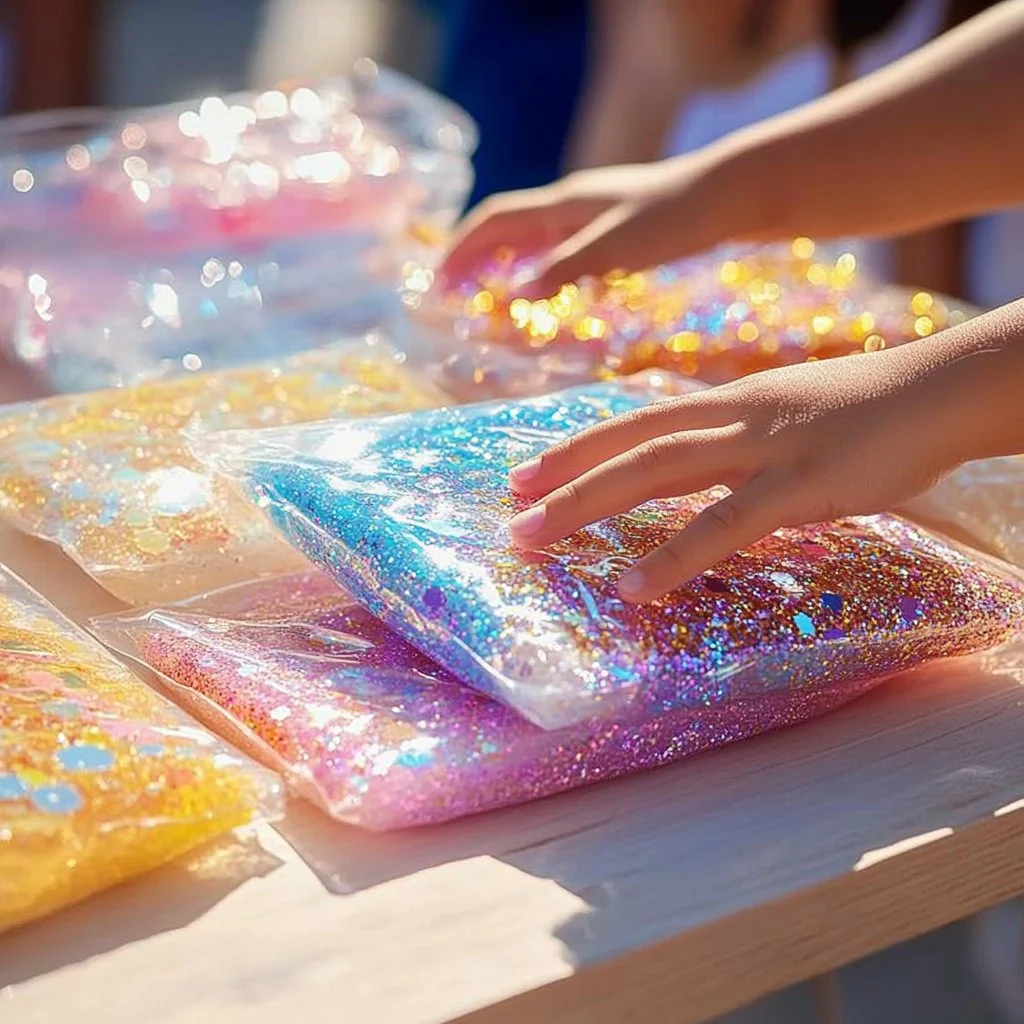Sensory bags are a fantastic way to engage your little ones in hands-on learning experiences while promoting fine motor skills and sensory exploration. These colorful, squishy bags filled with various textures and materials provide a unique way for children to explore their environment in a safe and mess-free manner. Not only are they easy to make, but they also offer endless possibilities for customization, making them an excellent addition to any playroom or classroom. Whether you’re looking to entertain a curious toddler or create calming activities for older children, sensory bags can keep kids engaged for hours while stimulating their senses. Dive into this guide, and discover how you can create your very own sensory bags!
Why You’ll Love This Sensory Bags:
- Promotes Sensory Exploration: Engage multiple senses with different textures, colors, and liquids.
- Safe and Mess-Free: No spills or clean-up required.
- Customizable: Easily adapt contents to reflect seasonal themes, interests, or educational topics.
- Encourages Fine Motor Skills: Great for developing hand strength and coordination.
- Calming Effect: Ideal for soothing anxious feelings or providing a calming sensory experience.
- Bonding Activity: A fun project for parents, teachers, or caregivers to do with children.
Materials:
- Ziploc bags (or other sealable plastic bags)
- Hair gel or clear corn syrup
- Food coloring (optional)
- Glitter or sequins (optional)
- Small toys (e.g., foam letters, mini figures, beads)
- Duct tape (to secure the bags if necessary)
- Scissors (for any cutouts)
Full Step-by-Step:
Step 1: Prepare Your Materials
Gather all materials and choose your desired sensory elements. Consider the interests of your child when picking out toys or textures.
Step 2: Fill the Bag
- Start with Hair Gel: Pour in a generous amount of hair gel or clear corn syrup; this will act as the main sensory element.
- Add Colors and Glitter: Squeeze a few drops of food coloring and sprinkle in some glitter for visual appeal.
- Incorporate Small Toys: Add your chosen small toys or objects to the bag for extra exploration.
Step 3: Seal the Bag
Carefully seal the Ziploc bag, ensuring no air is trapped inside. For added security, you can use duct tape to seal the edges of the bag.
Step 4: Test the Bag
Gently squish the bag to make sure it holds its contents securely and that the sensory elements are enjoyable to engage with.
Step 5: Play and Enjoy!
Encourage your child to explore the bag by squishing, shaking, and turning it. Talk about the colors and textures together!
Tips & Variations:
- Texture Swap: Instead of hair gel, try using different liquids like water or sand for diverse sensory experiences.
- Seasonal Themes: Create themed bags (e.g., beach, garden) by incorporating items reflective of that season.
- Educational Opportunities: Use letters and numbers for a learning-focused sensory bag.
- Natural Elements: Add natural materials like leaves or small stones for a more textured experience.
Frequently Asked Questions:
Q1: Can I use other types of bags?
A1: Yes, feel free to use any sealable plastic bag. Just make sure it’s durable.
Q2: What should I do if the gel leaks?
A2: Ensure you seal the bag tightly, using duct tape around the edges if needed. If it leaks, please supervise play closely, as the contents may stain.
Q3: How can I clean up if it gets messy?
A3: If any contents leak out, warm soap and water usually will clean it up, but stick to non-toxic materials that won’t stain.
Q4: Are sensory bags safe for infants?
A4: Sensory bags can be safe for infants when supervised. Ensure there are no small parts they might swallow.
Suggestions:
- Try creating a sensory bag focused on a specific color to help with color recognition.
- Make a holiday-themed bag with seasonal decorations and colors.
- Use items of different weights to discuss concepts like heavy and light during play.
Final Thoughts
Sensory bags are a wonderful craft that not only entertains but also nurtures young minds through sensory play. Remember, the possibilities are endless when it comes to customization and fun! We encourage you to share your unique versions of sensory bags in the comments below. Let us know how your little ones interact with their creations—happy crafting!
Print
Sensory Bags
- Total Time: 10 minutes
- Yield: 1 sensory bag
- Diet: N/A
Description
Create engaging sensory bags to promote fine motor skills and sensory exploration for children.
Ingredients
- Ziploc bags (or other sealable plastic bags)
- Hair gel or clear corn syrup
- Food coloring (optional)
- Glitter or sequins (optional)
- Small toys (e.g., foam letters, mini figures, beads)
- Duct tape (to secure the bags if necessary)
- Scissors (for any cutouts)
Instructions
- Gather all materials and choose your desired sensory elements.
- Pour in a generous amount of hair gel or clear corn syrup into the bag.
- Add a few drops of food coloring and sprinkle in glitter.
- Add your chosen small toys for extra exploration.
- Seal the Ziploc bag, removing as much air as possible.
- Secure the edges with duct tape if necessary.
- Test the bag by gently squishing it to check for secure contents.
- Encourage your child to explore the bag by squishing, shaking, and turning it.
Notes
Try various liquids and natural elements for different sensory experiences, and ensure supervision for safety.
- Prep Time: 10 minutes
- Cook Time: 0 minutes
- Category: Craft
- Method: Crafting
- Cuisine: N/A
Nutrition
- Serving Size: 1 bag
- Calories: 0
- Sugar: 0g
- Sodium: 0mg
- Fat: 0g
- Saturated Fat: 0g
- Unsaturated Fat: 0g
- Trans Fat: 0g
- Carbohydrates: 0g
- Fiber: 0g
- Protein: 0g
- Cholesterol: 0mg

